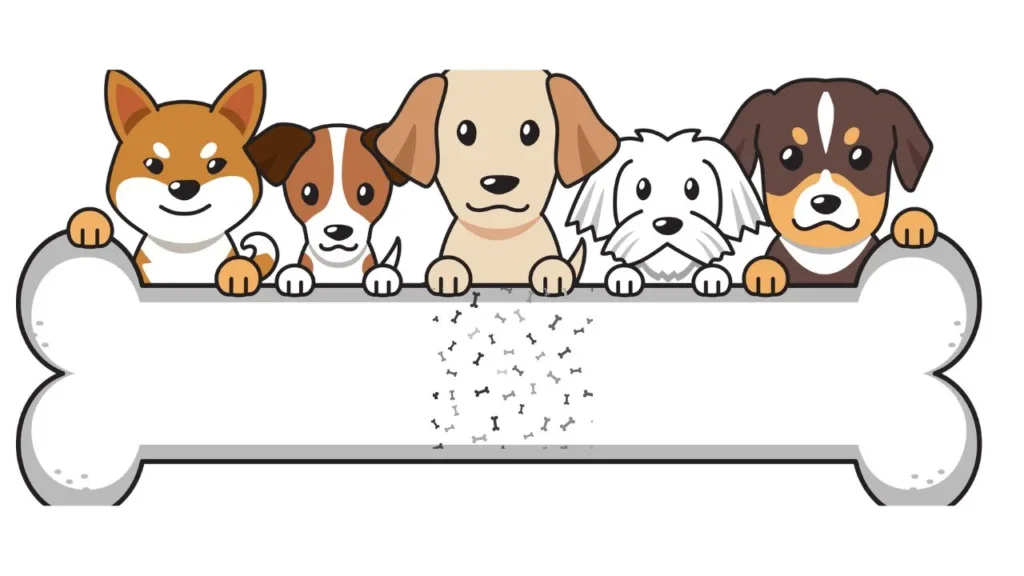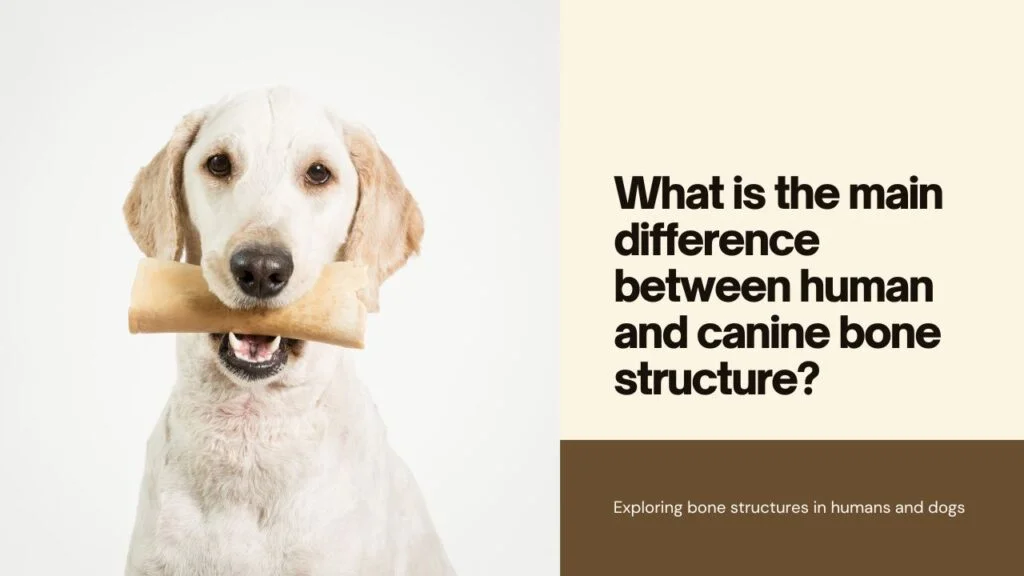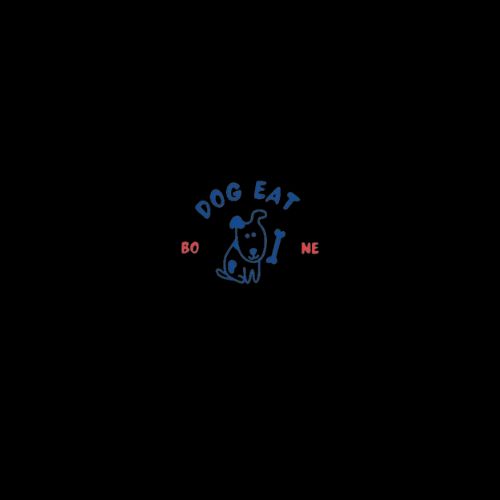Bones can be a good source of minerals and other nutrients and help satisfy your dog’s appetite. Feeding bones promotes clean teeth but can also be risky for your dog’s health. Many experts don’t recommend bones for dogs. However, despite their natural desire to chew, bones can be dangerous. Cooked bones, in particular, can break into sharp pieces that may cause choking. Many vets caution that letting your dog chew on bones can lead to serious health issues. its better you give him Healthy Fruits.
So Can I Give A Dog A Bone?
Raw bones are generally seen as better for dogs than cooked bones. If you’ve ever wondered, “Are cooked bones bad for dogs?” the answer is typically yes. Both raw and cooked bones can break into sharp pieces, which may harm your dog’s mouth, throat, or digestive system, potentially causing serious injury or even death (this happens more often with cooked bones).
While raw bones are considered safer because they are softer and less likely to break into sharp pieces, they still come with risks like choking, infections, or blockages. It’s important to always watch your dog while they chew on a raw bone.
Here are some of the consequences of a dog chewing on raw or cooked bones.
- Lacerations or punctures to the gums and tongue
- Cuts and wounds to the throat
- Damaged or broken teeth
- Choking
- Vomiting
- Diarrhea
- Severe constipation
- Intestinal blockage
- Perforation of the intestines
- Rectal trauma and bleeding
Unsafe Bones for Dogs
Cooked Chicken and Turkey Bones: These bones tend to splinter easily. Small bones, in general, are also more likely to get stuck in a dog’s throat or esophagus compared to larger bones.
T-Bones: Due to their shape, T-bones can get stuck in a dog’s throat, with one end in the esophagus or trachea. This can cause severe swelling, which might block the airway and stop the dog from breathing.
Small and Circular Bones: Bones that are smaller than a dog’s mouth or easily break apart can be dangerous. They can cause choking or injuries to the mouth and digestive system. Circular bones are also problematic as they can get stuck around a dog’s lower jaw, causing distress. Freeing the jaw often requires sedation.
Safe Bones for Dogs
It’s best to choose raw bones from a reliable butcher. These bones should be large enough for your dog to hold easily, ideally around the size of their head, and should have bumps or bulges on both ends.
Although raw bones are generally safer, they still come with risks. Dogs can break teeth, injure their gums, or swallow sharp fragments. Chewing for too long can also lead to constipation. Raw bones should be refrigerated before giving them to your dog and thrown away after a few hours.
Why Bones Can Be Harmful to Dogs (According to the FDA)

Broken Teeth: Bones are hard and can break a dog’s chewing teeth easily. This is painful and requires costly treatment, like tooth extraction or a root canal.
Mouth and Tongue Injuries: The sharp edges of broken bones can injure a dog’s tongue, cheek, or the roof of the mouth.
Bones Stuck Around the Jaw: Round bones can get stuck behind the lower teeth, causing distress. Sedation or anesthesia is often needed to remove the bone.
Choking Hazard: Bone pieces can get stuck in the esophagus or even the windpipe, making it hard for your dog to breathe. Choking is a serious emergency.
Stomach and Intestinal Injuries: Sharp bone fragments can harm the stomach and intestines. In severe cases, bone pieces may pierce the stomach or intestines, leading to a life-threatening infection called peritonitis.
Bones Stuck in the Stomach: Large bone fragments may not pass through the stomach, causing vomiting and irritation. Surgery or endoscopy is needed to remove them.
Intestinal Blockage or Constipation: Bone fragments can cause blockages in the intestines or colon, leading to pain and trauma. Surgery or enemas may be required to fix the problem.
Risk of Infection from Raw Bones: Raw bones can carry harmful bacteria like E. coli, Salmonella, and Listeria, which can make both dogs and humans sick. Children, the elderly, and people with weak immune systems are especially at risk.
Bone Safety Guidelines
When giving your dog a bone, keep these basic safety tips in mind:
- Give raw meat bones.
- Remove the bone after 10 to 15 minutes and refrigerate it.
- Discard the bone after three or four days.
- Choose large bones for large dogs like German Shepherds, Bloodhounds, or Mastiffs.
- Always watch your dog while they chew on a bone.
- Be informed about the type of bone you’re giving.
Do Not Do This
- Give your dog the wrong type of bone.
- Give cooked bones of any kind.
- Allow your dog to chew a bone into small pieces.
- Give a bone to a dog with stomach issues.
- Offer a bone if there’s another dog around.
Note: This information is for guidance and does not replace professional veterinary advice. For specific concerns, always consult your vet.
FAQS
How Many Bones Do Doges Have?
Dogs typically have between 319 and 321 bones. This number can vary depending on the dog breeds, larger breeds particularly in relation to tail length; smaller breeds shorter tails have fewer bones compared to longer ones.
Do dogs have 320 bones?
How many bones do doges have? Yes, dogs generally have around 320 bones, though this number of bones can vary slightly based on tail length. Dogs also have around 700 muscles that help them move, stabilize their joints, and maintain posture.
How many bones does a dog have in its foot?
Each of a dog’s paws has four larger bones called metatarsals (in the hind paws) or metacarpals (in the forelimb paws). Each of these larger bones connects to three smaller bones that make up the toes. These smaller bones are called phalanges.
Is a dog’s tail a bone?
Yes, a dog’s tail does contain bones. Though the tail is very flexible and mobile, it is made up of vertebrae that provide structural support.
What is the main difference between human and canine bone structure?
The main difference is that dogs have four legs while humans have two and bones and joints. Canine bones are generally denser than human bones. While both dogs and humans furry friend and they have similar types of bones, their sizes and proportions are different. For instance, human fingers are straight, and human thumbs are quite different from a dog’s paw.

How many bones do dogs and humans have?
humans dogs An a adult human has 206 bones, while a typical dog has between 319 and 321 bones.
Difference in Teeth
Dogs have long, strong teeth adapted for their diet, which are generally more powerful than human teeth. Human teeth are less specialized and adapted for different functions compared to a dog’s teeth.
How do bones and muscles work together for movement?
Bones and muscles work together to create movement. Muscles come in pairs: one muscle (the flexor) contracts to bend a limb, while the other (the extensor) works fun fact to straighten it. Muscles are connected to bones by tendons. When a muscle contracts, the movement is transferred from the muscle through the tendon to the bone, resulting in movement.
What are the three dog head shapes and their functions?
is that usually different of skeletal structures, Admire the detailed beauty of a dog’s skeleton, where every bone shows its agility, strength, and grace.
- Dolichocephalic: Long-headed, like a Greyhound.
- Brachycephalic: Short-nosed or headed, like a Pug or Boxer.
- Mesocephalic: Intermediate head length, like a Labrador.
Conclusion
While giving bones to your dog is not very safe, if you still want to, it’s crucial to take necessary precautions. As a responsible owner, always prioritize your dog’s health and safety.











No Comment! Be the first one.